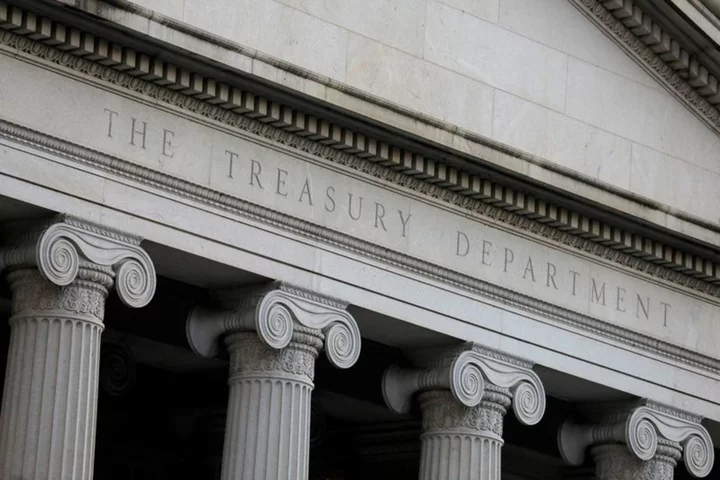By Sarupya Ganguly
BENGALURU U.S. Treasury yields will rise significantly over the coming month, according to analysts polled by Reuters who were split over whether the risk of a U.S. default was higher or the same as prior stand-offs over the debt ceiling.
President Joe Biden and top lawmakers in Congress have about three weeks to strike a deal over raising the $31.4 trillion U.S. debt limit, which has sharply increased volatility in bond markets.
Half of the 28 respondents in the May 5-11 Reuters poll said the risk of a default was higher this time compared to prior episodes of debt ceiling brinkmanship. The rest said the risk was the same.
Previous stand-offs have typically resulted in last-minute arrangements, but in 2011 the top-notch U.S. credit rating was downgraded for the first time. Analysts, however, warned that the current situation may be riskier owing to widening political divides.
In the meantime, elevated worries about a default are set to push Treasury yields higher. U.S. 2-year and 10-year yields are forecast to rise over the coming month by around 20 and 10 basis points, respectively, the poll showed.
Asked in what range the 10-year yield, currently at 3.38%, would trade over the coming month, the median response from strategists who were polled was 3.30%-3.60%. Individual responses ranged from as low as 3.0% to as high as 4.0%.
"The balance of risks has moved decisively in a negative direction this week, with the Treasury Secretary providing a June 1 deadline for the debt ceiling, while stresses in the regional banking sector continue to weigh on markets," noted Phoebe White, U.S. rates strategist at J.P. Morgan.
"While a short-term solution to buy time until the fall could be an option, it's hard to know whether even this type of stop-gap measure could get enough votes."
Uncertainty over whether the debt ceiling will be raised on time, along with lingering worries around small to mid-sized U.S. banks, has added pressure to an already-turbulent Treasury market this year.
Yields on short-dated Treasury bills, the most sensitive to debt ceiling jitters, and the cost of insuring against a U.S. sovereign default have both surged in recent weeks.
The most widely-followed indicator of bond market volatility, the MOVE index, is currently roughly 45% higher than its long-term average.
Looking further ahead, the U.S. 2-year note yield was expected to fall sharply to 3.30% from the current 3.86% by April 2024, still just slightly higher than the 10-year note yield.
Financial markets are pricing in at least 50 basis points of interest rate cuts from the U.S. Federal Reserve by the end of 2023, suggesting a resilient economy and a strong labor market will give in to recession this year.
But the Fed, which last week signaled a pause to one of its most aggressive tightening campaigns in history, pushed back on speculation that will soon consider cutting rates as inflation still runs more than twice the 2% target.
"The key question ... for the second half of this year is whether the bond market is correct in its assumption the Fed will be forced to reverse policy and cut several times by early 2024," said Steven Ricchiuto at Mizuho Securities.
"In contrast, our analysis suggests the Fed's 'higher for longer' strategy is more realistic."
(Reporting by Sarupya Ganguly and Indradip Ghosh; Polling by Milounee Purohit and Mumal Rathore; Editing by Hari Kishan and Paul Simao)

